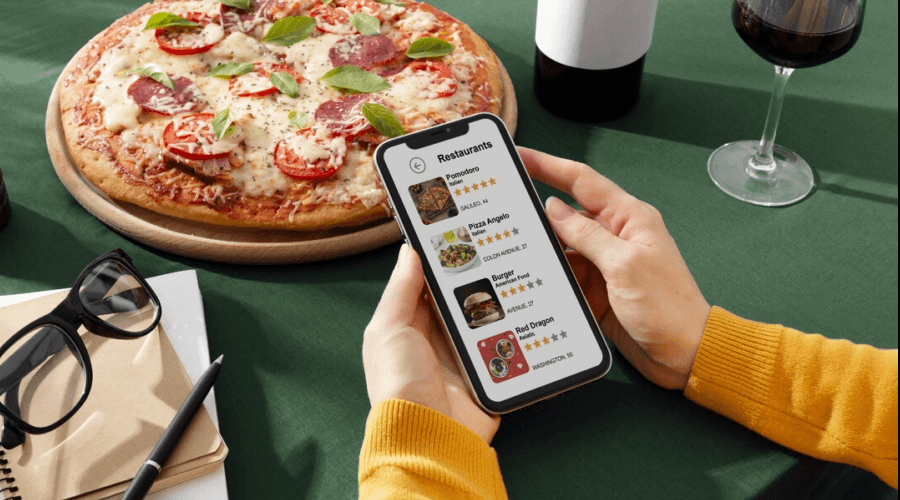Food delivery has evolved dramatically over the past decade, and in 2025, the industry is set for even more innovation. As technology advances and consumer demands shift, businesses must adapt to new trends to stay competitive. Here are the top food delivery trends shaping the industry in 2025.
1. Hyper-Personalized Food Recommendations
AI-driven food recommendations are becoming the norm in food delivery apps. Platforms use machine learning to analyze user preferences, past orders, and dietary restrictions to offer customized meal suggestions. This trend enhances customer satisfaction and encourages repeat orders by ensuring every recommendation aligns with individual tastes.
2. Drone and Autonomous Vehicle Deliveries
Major food delivery services are investing in drone technology and self-driving delivery vehicles to speed up service times and reduce operational costs. In urban areas, drones can navigate traffic congestion, while autonomous robots efficiently deliver meals within communities. These innovations promise faster deliveries and a reduced carbon footprint.
3. Ghost Kitchens Expansion
Ghost kitchens, also known as virtual or cloud kitchens, continue to expand, allowing restaurants to operate without traditional dine-in spaces. This cost-effective model helps businesses scale their delivery operations while minimizing overhead costs. Expect more ghost kitchen collaborations with established brands and new entrants in 2025.
4. Sustainable and Eco-Friendly Packaging
Consumers are more environmentally conscious than ever, and food delivery companies are responding by adopting sustainable packaging. Biodegradable containers, edible packaging, and reusable delivery bags are becoming standard. Expect more businesses to prioritize eco-friendly practices to attract sustainability-focused customers.
5. Subscription-Based Food Delivery Services
Instead of paying per order, many consumers now prefer subscription-based food delivery services. These plans offer unlimited deliveries, discounts, and exclusive access to new menu items for a monthly fee. This model boosts customer retention and provides food delivery platforms with consistent revenue.
6. Health-Focused and Diet-Specific Meal Plans
The demand for healthier food delivery options continues to rise. Meal delivery services now cater to various dietary needs, including keto, paleo, vegan, and high-protein meal plans. More restaurants and delivery apps are partnering with nutritionists and dietitians to offer scientifically balanced meal options.
7. Blockchain for Food Transparency
Blockchain technology is enhancing food transparency and safety in the delivery industry. By tracking the entire supply chain, customers can verify the origins of their meals, ensuring ethical sourcing and high-quality ingredients. Expect more food delivery companies to adopt blockchain for increased consumer trust.
8. Rise of Localized Food Hubs
To reduce delivery times and support small businesses, food hubs are gaining popularity. These hubs centralize meal production and distribution within specific neighborhoods, ensuring fresher meals and quicker deliveries. Localized food hubs also help reduce the carbon footprint associated with long-distance deliveries.
9. AI-Powered Chatbots for Customer Support
AI-driven chatbots are transforming customer service in the food delivery industry. From resolving order issues to providing real-time delivery updates, chatbots offer instant support, reducing wait times and enhancing user experience. Many platforms integrate AI with voice assistants for a hands-free ordering experience.
10. Expansion of Grocery and Meal Kit Deliveries
Food delivery services are no longer limited to restaurants. In 2025, grocery and meal kit deliveries are booming as more consumers opt for convenience. Platforms like Uber Eats and DoorDash are partnering with grocery stores, allowing users to order fresh produce, pantry staples, and ready-to-cook meal kits directly from their apps.
The Future of Food Delivery in 2025
The food delivery industry is poised for incredible transformation in 2025, with AI, automation, and sustainability driving change. Businesses that embrace these trends will thrive in an increasingly competitive landscape. Whether it’s faster deliveries, healthier options, or eco-friendly solutions, the future of food delivery is all about convenience and innovation.
